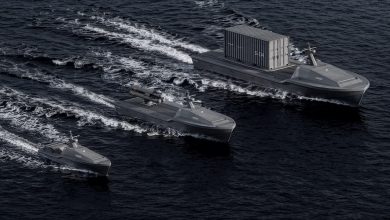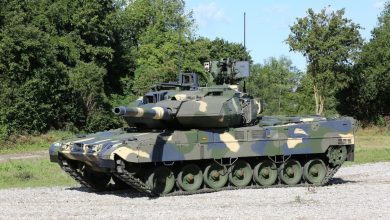MBDA Unmasks One-Way Effector, Rapid-Strike Missiles at DSEI 2025

Crossbow one-way effector leads MBDA’s new missile lineup at DSEI 2025, joined by Akeron MBT 120, SPEAR Glide, Raven, and Stratus.
European missile manufacturer MBDA has brought a packed slate of new defense systems to this year’s Defence and Security Equipment International (DSEI) convention in London.
Leading the lineup is Crossbow, a one-way effector built for mass deployment in contested electromagnetic environments.
Vehicle-launched and carrying a 300-kilogram (661-pound) warhead, it went from design to live demo in just seven months, with production projected to begin in mid-2026.
For armored warfare, MBDA is developing the Akeron MBT 120, a non-line-of-sight missile that lets main battle tanks strike without exposing themselves.

Equipped with a passive electro-optical seeker, the weapon can operate in infrared bands and also features a fire-and-forget mode, giving crews greater flexibility.
The system heads into test firings next year.
Upgrades to Legacy Systems
MBDA is also reworking its existing portfolio. The new SPEAR Glide offers a cheaper, unpowered alternative to the company’s cruise missiles.
It is fitted with an electro-optical seeker similar to the Akeron missile, replacing the conventional radio frequency seeker used in the previous SPEAR system.
Meanwhile, the ASRAAM (Advanced Short Range Air-to-Air Missile) Raven, now gets a surface-launched variant to expand its role beyond air combat.
The missiles have been widely used in Ukraine, with over 400 engagements and a success rate of around 70 percent.
A Joint European Strike Project
On the multinational front, France, Italy, and the UK are backing MBDA’s Stratus project, a family of low-observable, rapid-strike missiles with both anti-ship and anti-air capabilities.

Designed for cross-domain use, the missiles have cleared assessment and are now moving into full development.
“These new advances on STRATUS are the result of France, UK, and Italy’s strong commitment to develop Europe’s present and future critical capabilities,” said MBDA Chief Executive Officer Eric Béranger.
“Maturing such a large portfolio of technologies in such a short amount of time has required a massive effort between the nations, and has again demonstrated the value of the MBDA cooperation model.”





